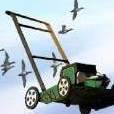Leaderboard
Popular Content
Showing content with the highest reputation on 04/27/2019 in all areas
-
Okay, so I've been putting off repairing the infamous "stuck roof vent" problem that's plagued my C model since the upholstery was redone. It's been stuck in the open position for at least 4 years and I've just been putting it off. Well, I finally decided to take the project so I set aside a full day of wrangling headliners and trim parts and finding the necessary hardware to repair whatever I found to be froze up. I rounded up all the tools I thought I might need, put some music on the stereo, and had a yeti mug full of ice water and started at what was to be a while of sweating in my cockpit. I started by beginning to remove the trim that surrounds the front overhead vents and cockpit lights along with the vent control knob. I removed the 4 small screws that hold it in place and inserted the small allen wrench to remove the vent knob. I decided to just try to move the knob a bit to get to an easy position to loosen the allen nut when, much to my amazement, it rotated freely and the roof vent closed completely. I repeated opening and closing it several times with a stupid grin on my face. As it turned out the back left screw was about 1/8" too long and was engaging the gears of the vent mechanism and had locked it in place. Total hardware needed to repair vent-shorter screw. Time of repair-15 minutes. Sometimes I'd rather be lucky than good. Don4 points
-
I thought I'd resurrect this old thread because the original question gets to the core of a misunderstanding about the Mooney tail feathers that I see on MS from time to time. It turns out that a vertical stabilizer with a vertical leading edge is more effective than one with a swept back leading edge, and this allows it to be of smaller area which in turn reduces the weight and drag. The Mooney tail design wasn't greatly different from other airplanes back when Al designed it - just a bit more angular. It wasn't until around 1960 I believe that Cessna started the swept fin craze making the Mooney tail appear backwards. The interesting question is why is the vertical leading edge design more efficient? I has to do with the angle that the relative wind flows with respect to the chord line of a wing (aerodynamically, the vertical stabilizer is a vertically mounted wing with a symmetrical airfoil). The cord line is perpendicular to the leading edge of a wing. In the case of a vertical leading edge, the relative wind flows parallel to the chord line. This airflow produces the necessary aerodynamic side force ("lift" - think Bernoulli, Newton) whenever a yaw creates an angle of attack. Now consider the swept back leading edge. The chord line is still perpendicular to the leading edge, but the relative wind is now at an angle to the chord line. Some of the relative wind will flow parallel to the chord line and some will flow spanwise. The spanwise component is "wasted" in the sense that it doesn't produce any aerodynamic force. So, the useful component of the relative wind is lessened. Aerodynamic force is a function of airspeed, angle of attack and area. To achieve the same aerodynamic force at the same airspeed and angle of attack, the swept tail will need to be larger than the straight tail. Drag is also a function of area, so as the area increases, so will the drag. I believe that Bill Wheat said in Boots on the Ground that Al calculated that a swept tail would need to be about 20% larger. So, if the swept tails are just for show on small planes, why do jets have them? Jets fly fast and recall that the air flowing over a wing accelerates. When the airspeed of this accelerated air gets close to the speed of sound, the drag goes way up. The rapidly increasing wave drag as the aircraft approaches the speed of sound is why it used to be caused the "sound barrier". By applying sweep, the wing sees reduced airspeed of the component of relative wind along the chord line, and this reduces the drag. Sweep is applied to all the airplane's "wings" (wing, horizontal and vertical stabilizers) for this reason. Skip4 points
-
@Skates97 don’t EVER give up that wife!!! I have one just like that, who wanted me to move off the “F” model to a Mooney Rocket for more speed and overall capability (with turbo and deice). And then supported the Lancair Turbo Prop move as well. Those women are few and far between. And the muffler bearing comment; I own a truck dealership and have wrenched my whole life. Yep.......that’s always been a fun one with newbies. Tom4 points
-
They don't even need toxicology reports. If they stole a Bellanca they must have been drunk . . lol3 points
-
This is it, not sure why it always comes up on the forums. Sort of common sense.2 points
-
since I get asked here some pictures of the gravel strip from Kulusuk. Refueling hurts a bit with more than $16 per GAL.2 points
-
here for all KFC200 user some helpful links: https://www.mouser.com/ProductDetail/633-AT407C?r=633-AT407C https://www.mouser.com/ProductDetail/633-AT512CH?r=633-AT512CH https://www.mouser.com/ProductDetail/633-MB206103?r=633-MB206103 https://www.mouser.com/ProductDetail/999-P7-121122?r=999-P7-121122 and if you can handle a screwdriver you can also play with that (3 are needed): https://www.mouser.com/ProductDetail/785-1SX74-T?r=785-1SX74-T2 points
-
Until purchasing my Mooney almost all my flying was in twins. I learned to fly in a AC560 and moved onto a C320. Twins are very safe if you move slow and methodically. When things go bad most NTSB reports in general aviation tend to relate to a bad decision even with good training (that is looking very much to be the case in the recent Atlas loss). People rush to feather, pull mixtures, etc. which you see even during training. A windmilling prop isn’t that much drag put people tend to really focus on that and pulling the gear up. You just have to be very slow and methodical and you are ok. You rush and you end up like the China Airlines ATR. I have no idea what happened in this incident but twins are safe and training on systems is rarely the issue. It is training on being logical and calm in an emergency, it is all about EQ and not IQ. I have never had an issue of losing an engine in a twin in almost 2000hrs so who knows. I have though lost 2 cylinders in a Mooney on two separate occasions including one in IMC. In both cases still here to talk about not because I flew a perfect ILS (it was a full forward slip rocket ship to hit DH) with an engine chewing itself apart but because I just focused on being rational.2 points
-
it's good to have respect. This rime was build up over hours in VMC and was not growing. I would be nervous as well in IMC. I also had the chance to descend to have the outside temperature above the freezing point (open water between Iceland and Greenland) to clear of the ice. If you have icing conditions over Greenland and you can't climb above or you stay over water and fly the coastline on the southend of Greenland. This is a bit a detour but you stay out of potential ice. Minimum enroute altitude over the ice cape is FL150. So flying FL200 or higher is normally providing VMC on top. If you fly in the summer and like to stay above freezing temperatures you can also fly between Iceland, Greenland and to Newfoundland in 5000ft. Only between Newfoundland and Greenland (e.g. CYYR and BGBW) you need to fly FL250 if you dont have an HF radio. If you can't fly FL240 your way is over Iqaluit (Frobisher Bay) and Nuuk or Søndre Strømfjord.2 points
-
What @carusoam said. I just wouldn't buy a Mooney without an autopilot. I bought an M20C in 2014 for $48K that had an Stec30/altitude hold. I now fly a 252, $119K, with a KFC150 with pre-select. In five years I've yet to spend one dime maintaining an autopilot. I've found both to be very reliable. It's not easy to find a short body with an autopilot, but just keep looking. They come up for sale every once in a while. And are still a good buy. But have your cash, pre-buy, logistics, all ready to go when the plane appears. Buying an airplane without an autopilot anticipating that there will be one available in the "near future" just leads to disappointment. I'll reference several members on this forum who are about to lose patience and sell their Mooneys that are still waiting for new autopilots to be approved for their Mooneys. We just don't know when it's going to happen. And when they eventually come out, you can buy one to replace the Stec/King/Century just as easily as you can install one in a Mooney without an autopilot. Be patient, get your ducks lined up, be ready to buy when the right Mooney comes along. It will be a much better financial decision to buy an E with an Stec30/altitude hold, minimum, rather than buying one without and upgrading.2 points
-
“The FAA said while Tucker may have been a student pilot, he was restricted from having passengers.” Seems like the cocaine would be a bigger issue. We still use it sometimes for nosebleeds in the ER. I remember when I worked in LA this kid was on the phone with his friend “I came in for a nosebleed and they’re giving me cocaine! This is so LA!” Fortunate that no one one the ground was injured.2 points
-
Anthony, to my understanding Mooney International does not own TC for M18 (and M22). I would expect they wouldn't make part for those at all...2 points
-
The EXACT REASON I didn’t waste time getting a twin rating when my mercy flight organization bought a twin. You have to fly enough hours and train sufficiently to be safe during an engine failure. I didn’t feel I could do that, and knew I would be flying a much more capable and faster single engine turbine in the future. No disrespect to an obviously good pilot and great man helping a lot of people at his own expense. RIP my friend. Tom2 points
-
Morning, This data is in the pilots log of Garmin Pilot when you have a G500TXI with EIS and a Fs510. It logs every flight for logbook purposes including route alt and engine data. Also have a permanent IPad mini set up on co-pilot side that depicts the eis data page on the txi. Sent from my iPad using Tapatalk2 points
-
You can use Kulusuk BGKK to shorten the leg. BTW in my eyes the most beautiful airport in Greenland. It's a gravel strip but very even and they have AVGAS. Here some pictures from Kulusuk airport and the Greenland coastline.2 points
-
First thank you for this group. Thanks to the voluminous information available, I'm the new owner of an M20C. So that means I have much to learn about these awesomely efficient machines. On the flight home this week, I was amazed that it was truing 172 mph on about 9.6 gph. Now for the questions...… What engine oil is recommended? My A&P likes Phillips X/C, however, he recommended I kick it around in here since there are a few engines or aircraft manufacturers where it is not recommended. I figure it would be a good idea for me to try to get a Maintenance Manual for the 20C. Any suggestions on other resources that would help me as well as an A&P. While I have an A&P close by with considerable older Mooney experience, something doesn't always break when you're near that person. Thank you for your patience and help everyone.1 point
-
Who did the reseal in 2011 and where is it leaking? Mine were stripped and resealed in 2012 before I bought the plane by Wetwingologists. The LH was great but the RH would leak if I put more than 20 gallons in it. Wetwingologists would fix it under warranty (even though expired by time) but I would have to get it across the country to them. None of the AP/IA's that I know wanted to break into it (I am assuming because they don't want to have to deal with another leak and then another and a plane owner wanting them to fix all of them. Long story short (I'll make a different thread with pictures later and post in my blog) but my AP/IA was willing to have me be the one to open it up and see what can be seen and approve the work. I suppose then it's on me and I can't keep bugging him about it. I was able to find the spot that was leaking, patch that small spot last Saturday and now I can fill it all he way with no leaks.1 point
-
It may not need a full overhaul, but it does need a prop strike inspection (johnson bar came out on touchdown, there's a thread on here that describes a similar situation). And, since the plane has sat for two 5-7 year periods (dry climate, hangared) I wouldn't be surprised if it does end up being an overhaul. I did ferry it (~30minutes) from the site of the incident (with a permit) and there was nothing unusual in the way it ran during that flight. The engine is already removed, the only reason I was thinking about it was that my mechanic was actually interested in the A1D as an option to put in a pacer he's rebuilding. If it was a straight-across swap it may speed my project along, and between what I'd pay for the engine and what I'd get for the current one it could save a little $$. Most likely I'll just continue with the expected rebuild on the current one.1 point
-
I found that teaching 3 pumps and 90mph for the final segment worked well. Most of my students were transitioning from draggy 172's, and 2 pumps just didn't offer enough drag and they would surely over speed at times. Missed was simply power up, positive rate, gear up flaps up.1 point
-
1 point
-
https://washwax.com/ its a bit spendy when I use it on the motor home, but the stuff works great, especially because my well water is very hard. No water wash works for me.1 point
-
Look for Bryan and his two-tone-red Mooney on youtube as piperpainter. Amazing skills!1 point
-
Dead Narco and dead BK equipment is getting more dead by the day... Used equipment is a great idea... try to stay with the digital age... skip the tube radios... and mechanical tuners... Do you want to see a list and pics of an MSer’s stash of used nav coms and accessories? See what @Alan Fox has on the shelf for this... or see... Best regards, -a-1 point
-
Wrenching most of my life, and my business of teaching high performance driving and having a fleet of race cars...It just seems appropriate. We have one grand baby so far and she is in Monterey Ca, so trips there to see grand baby is a priority. Luckily for me, with all of the race cars and other things, my dear wife is very supportive of me getting a plane and is already making plans for trips. She doesn't really care what kind of plane, but being fast to a destination certainly is a plus. Anyone do any back country kind of flying? This is something that our local school likes to do. Seems fun. Obviously not with a mooney...1 point
-
I get a little concerned when I start to get that much rime buildup on my leading edge (like we did last week over the Appalachians). What’s your plan over a few hundred miles of coldish water? Maybe I’m just getting more chicken as I age.1 point
-
Yes, Culver LFA, I did get this started, but last weekend had bad weather. There was such enthusiasm I just laid low on the rescheduling cause it wasn’t really about me anyway, (though I was looking forward to meeting you guys!). When I get another free weekend, I’ll pipe up again. I did get a good talk about M20K‘s and learned a bunch.1 point
-
unfortunately you can't use the gi-106a, the gs is built into the ki-214.1 point
-
The one thing I miss about having partners is having someone to fly with and trade IPC's with or at least hood time. -Robert1 point
-
The Mooney Factory Service Center has two WAAS kits for G1000 equipped aircraft available to be installed at the factory Service Center. We can install WAAS or WAAS with VNAV. Please contact sellis@mooney.com and I will be glad to send you a quote. We also provide other services and would be glad to discuss any upgrades or maintenance needs with you. Thanks Stacey Ellis Service Center Manager Mooney International Corporation sellis@mooney.com1 point
-
That’s not necessarily entirely true... in a single engine aircraft- when an engine fails, the plane is coming down. Maybe it will land in a field, or on a road, or at a nearby strip. When a twin loses an engine- most of the time, the pilot flys the plane back to the field and lands safely. The engine failure isn’t even required to be reported to anyone... and the statistic doesn’t make the Nall report. A twin has failure modes that need to be corrected immediately or can result in catastrophic loss of the aircraft (blue line speeds/Vmc being a major one).. but so do singles (approach turn stall, etc). The key is this: training. Knowing one’s limits and abilities.. objectively. and continuous preparation and practice for the worst case scenario. The twins do have higher approach speeds- so if they suffer a dual engine failure (fuel starvation)... then that opens the pilot up to a higher risk of fatality on landing than a single- for sure- but a competent, trained twin pilot should be able to handle a single engine failure safely, and without issue. Sadly, the person in the video did not leave himself a safety margin, and/or wasn’t ready or prepared...and the result was catastrophic.1 point
-
I had my prop balance checked based on a recommendation from my shop at annual. ("I don't like the way your baffling is accumulating cracks. I suspect there's more vibration than there ought to be. You should have your prop balanced.") Local prop guy tried to balance, looked at the numbers and told me they were bad enough that he didn't feel comfortable whacking weight on it and I should really take it to the local dedicated prop shop and have them statically balance it. Charged me hardly anything for his time. I took it to the local prop shop (Propellers NW) and they took a look at it and informed me they couldn't get it to balance either, needed to look at it closer and made sure I was all in on pulling the prop and statically balancing if necessary. A few days later they called me back and informed me they had discovered whoever had last installed the prop (before my time as owner, no idea who, when, or how long ago) hadn't torqued it down properly and I was lucky it hadn't separated. (EEEP! I'd been flying it like that for 120 hours.) They checked all the studs, inspected the flange for damage, mic'd the holes, told me that my regular shop should double check it against Continental's specs, statically balanced it and then dynamically balanced it to something reasonable (0.1 IPS or a little less.) It's since been through annual and had a second flange/crank inspection and been signed off as airworthy. Whole thing cost me a few weeks' downtime, a couple long drives, and about $800. The funny part is that even spectacularly out of balance I never really suspected anything was THAT wrong since it still felt smoother than the J models I'd flown. Now? Sewing machine. Baffles will probably last a lot longer. Mostly I'm glad I listened to my mechanic and it got addressed before I got dead. May your balance be less eventful than mine.1 point
-
1 point
-
1 point
-
Why would you put up 7.5K to then spend more money on something that is not available to fly for a bunch of months?1 point
-
Interesting to see the failure rate of the “autopilot system” before removing the mechanical AI, HSI with how it looks in the logs after the G500 installation. About 1/3 the log entry frequency in the 1100 hours post-G500. The pitch servo is the remaining Achilles heel of the KFC225: It takes an arrow every 400 hours. This relates to the original post as now that the only remaining mechanical moving parts are the servos autopilot troubleshooting has become simpler.1 point
-
This new prop balancing tool looks super accurate and somewhat idiot proof. I'd favor a shop if I knew there was one nearby that had one.1 point
-
Engine and prop are 2700 SMOH. A lot of O-360 make it that long but not much longer. Prop is showing signs of that age now. It is time to shop for repairs. Are you and the other owners prepared to fork up that money next week? If yes, sounds good. If no, move on. Oh, any partnership is like getting married. Some work great, others not so. This would be like having 3 spouses. If a decision is to be made, how does that work?1 point
-
Also a good point. I noticed on one of my go arounds how much forward pressure I had to keep on the yoke to maintain correct attitude. I actually thought to myself if the seat failed and slid back right now we would be going into a departure stall. Sent from my SM-G930V using Tapatalk1 point
-
At glideslope intercept (or FAF for non-precision) I set half flaps, and 80 knots. If I break out- full flaps to land. Go around? Max power, gear,rotate, 2 positive rates of climb, then flaps. Shouldn’t be more than 100 kias- still trying to max perform the climb on the missed (unless the procedure specified a hold down on the published miss). the main reason I like 80kts- is that I can still get my Missile slowed to onspeed from 80kts if I break out at mins. And I try to always practice how I’ll play.1 point
-
First time buyer... Gravitate towards the often flown, in annual, and known seller.... As in being able to speak with the seller for the bazillions of questions you may have along the way... Fear not... letting go of the quirky, out of annual, hard to understand reason for sale.... There will be plenty of wackiness in your own aviation experience, why pick up any additional wackiness prior to the sale... This plane is better for somebody else... somebody that buys planes as part of their business... Choose wisely... Best regards, -a-1 point
-
1 point
-
If you hook your towbar to the nose gear, lay on the ground, and swing the towbar to the side, it is immediately evident where the two bars come together. Then you can stick your finger up there and feel if there is a dent. Unfortunately the one that dents is the front-most of the two, so you can't see it (without a mirror). But you can feel it.1 point
-
1 point
-
Yup, I can vouch for this.....did over a 12 hour leg in Africa and landed with a full bottle in Djibouti. I dumped it on the ramp and improved the place....1 point
-
sorry - I have been having a lot of difficulties the last week connecting to the mooneyspace forum site - Sad story is that my mechanic was called away to support the red bull team and I had to delay going out to pick it up - this is maddening, the plane is ready but I need him available for an inspection after the first flight at least. Now scheduled to pick it up on the 8th of May1 point
-
Leaky bladder is a sign of Urinary Incontinence. It’s loss of bladder control, and ranges from a slight loss of urine after sneezing, coughing, or laughing to complete inability to control urination. It’s more common in women. Is your Mooney a boy or girl?1 point
-
Nice work, Brad! You didn’t let any of the internal smoke become external smoke! Best regards, -a-1 point

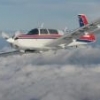

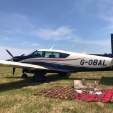
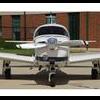




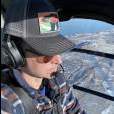







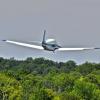



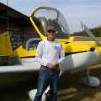

.thumb.png.7c67574d7b28f67b0b4a17760919b1ac.png)

